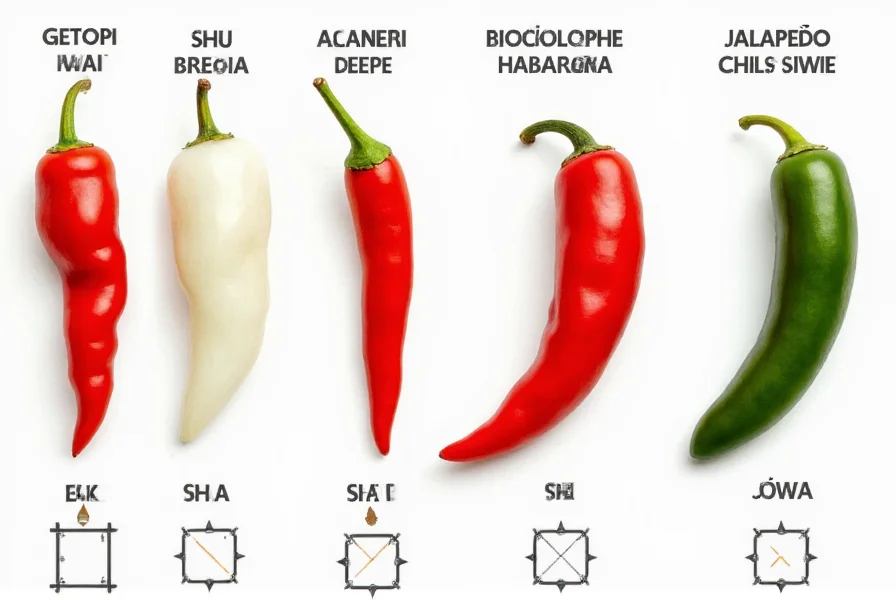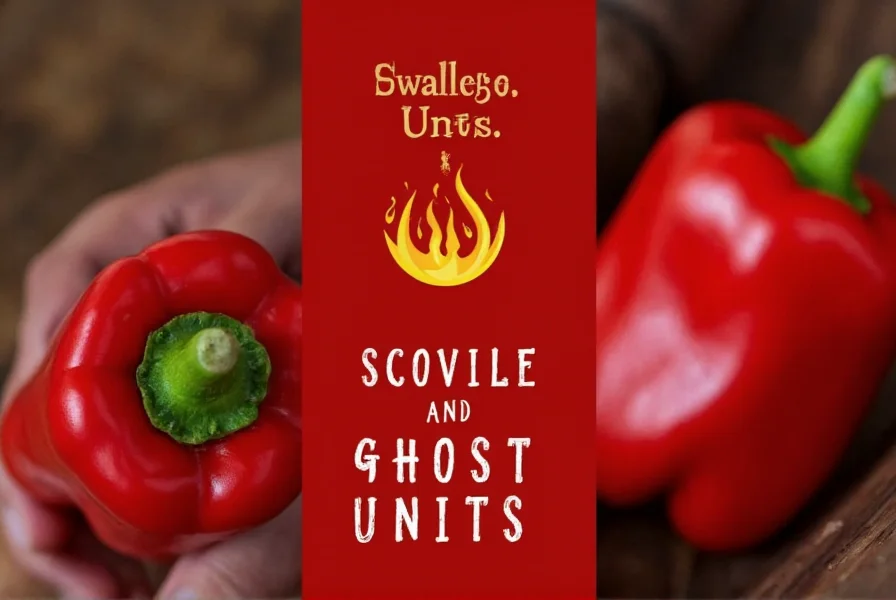The ghost pepper, also known as Bhut Jolokia, delivers an intense heat experience that far surpasses common chili varieties. Understanding its exact position on the Scoville scale helps consumers gauge what to expect when encountering this fiery ingredient.
Understanding the Scoville Scale Measurement
Invented by pharmacist Wilbur Scoville in 1912, the Scoville Organoleptic Test originally measured heat through human taste panels diluting chili extracts until the burn became undetectable. Today, high-performance liquid chromatography (HPLC) provides precise measurements of capsaicinoids—the compounds responsible for heat—in peppers.
Modern testing confirms that ghost peppers consistently register between 855,000 and 1,041,427 SHU. This wide range reflects natural variations influenced by growing conditions, soil composition, climate, and specific plant genetics. Even within the same harvest, individual ghost peppers can show significant heat differences.
Ghost Pepper Heat Comparison
Placing ghost pepper scoville units in context helps understand their extreme heat level. The following table shows how ghost peppers compare to other common chili varieties:
| Pepper Variety | Scoville Heat Units (SHU) | Heat Relative to Ghost Pepper |
|---|---|---|
| Bell Pepper | 0 SHU | 0 times |
| Jalapeño | 2,500-8,000 SHU | 100-300 times milder |
| Habanero | 100,000-350,000 SHU | 2.5-8 times milder |
| Ghost Pepper (Bhut Jolokia) | 855,000-1,041,427 SHU | Baseline |
| Carolina Reaper | 1,400,000-2,200,000 SHU | 1.5-2 times hotter |
Origin and Characteristics of Ghost Peppers
Native to Northeast India, ghost peppers (Bhut Jolokia) earned their name from the local Assamese word "bhut" meaning ghost, as the heat sensation seems to sneak up on you. These wrinkled, red peppers typically measure 2.4-2.8 inches long and have a distinctive fruity aroma with smoky undertones.
In 2007, the ghost pepper entered the Guinness World Records as the world's hottest chili pepper, a title it held until 2011 when surpassed by the Trinidad Moruga Scorpion. Despite losing the official title, ghost peppers remain among the most intensely hot commercially available peppers.

Practical Uses in Cuisine
Chefs and home cooks use ghost peppers sparingly due to their extreme heat. In traditional Indian cuisine, they appear in small quantities in chutneys, pickles, and meat dishes. The pepper's complex flavor profile—fruity, smoky, and floral—makes it valuable beyond just heat.
When working with ghost peppers, always wear gloves and avoid touching your face. The capsaicin concentration is high enough to cause skin irritation and severe discomfort if it contacts sensitive areas. Never consume ghost peppers raw without proper preparation knowledge.
Safety Considerations
Consuming ghost peppers requires caution. The intense heat can trigger:
- Immediate burning sensation in mouth and throat
- Excessive sweating and flushing
- Nasal congestion
- Temporary digestive discomfort
- In rare cases, more severe reactions requiring medical attention
If you experience overwhelming heat, consume dairy products like milk or yogurt rather than water, as capsaicin is fat-soluble. Start with minuscule amounts when experimenting with ghost peppers in cooking—often just a few seeds or a small slice provides sufficient heat for an entire dish.
Measuring Pepper Heat Accurately
Understanding ghost pepper scoville units requires recognizing that heat measurements aren't absolute. Factors affecting heat levels include:
- Plant stress (drought conditions increase capsaicin production)
- Soil composition and nutrients
- Sun exposure during growth
- Ripeness at harvest (fully ripe peppers are hotter)
- Specific part of the pepper (seeds and membranes contain most capsaicin)
For culinary applications, treat ghost peppers with respect. Their heat level makes them unsuitable for casual consumption but valuable for creating distinctive spicy flavors when used judiciously.

Frequently Asked Questions
How much hotter is a ghost pepper than a habanero?
Ghost peppers are typically 2.5-8 times hotter than habaneros. While habaneros measure 100,000-350,000 SHU, ghost peppers range from 855,000 to over 1,000,000 SHU. This means even the mildest ghost pepper exceeds the hottest habanero.
Can you eat ghost peppers raw?
While technically possible, eating ghost peppers raw is not recommended for most people. The intense heat can cause significant discomfort, temporary breathing difficulties, and digestive issues. Culinary experts suggest using ghost peppers in cooked dishes where heat distributes more evenly, or starting with minuscule amounts if experimenting with raw consumption.
What does a ghost pepper taste like beyond the heat?
Beyond the intense heat, ghost peppers offer a complex flavor profile with fruity, smoky, and floral notes. Many describe initial sweet and citrusy flavors that quickly give way to intense heat. The aftertaste often includes earthy, woody elements with a lingering warmth that can last 15-20 minutes.
How do you handle ghost peppers safely?
Always wear nitrile gloves when handling ghost peppers, as capsaicin can transfer to skin and cause irritation. Work in a well-ventilated area to avoid inhaling capsaicin particles. Never touch your face while handling them, and wash all surfaces and tools thoroughly afterward. Consider using eye protection when cutting ghost peppers, as airborne capsaicin can cause eye irritation.
Why do ghost pepper scoville units vary so much?
Ghost pepper heat levels vary due to growing conditions, soil composition, climate, water stress, and genetic differences between plants. Peppers grown in drier conditions with nutrient stress typically produce more capsaicin as a defense mechanism. Even within the same plant, individual peppers can show significant heat variation, making precise measurement challenging.











 浙公网安备
33010002000092号
浙公网安备
33010002000092号 浙B2-20120091-4
浙B2-20120091-4